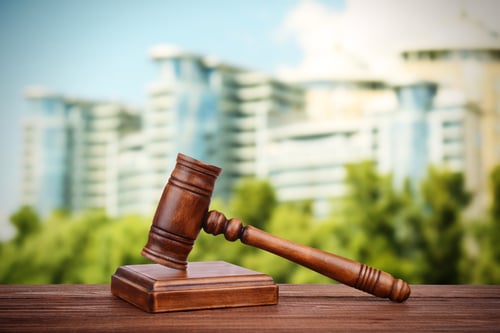Changes You Need to Make Under Local Law 33

The energy consumption of NYC buildings above 25,000 sq. ft. has been benchmarked since Local Law 84 came into effect. However, the general public is unaware of building energy performance, even though the benchmarking data can be accessed online. Local Law 33 was created to make building performance more visible, requiring the public disclosure of ENERGY STAR scores (1-100) and building energy grades (A-F).
For building owners subject to LL33, the only mandatory requirement is displaying the energy grade and score in a location that is clearly visible for tenants and visitors. If building data is being submitted to the NYC Dept. of Buildings according to LL84, no additional reporting is necessary - the energy grade is generated annually based on the reported data.
- Starting from 2020, building owners will be issued an energy grade based on the submitted data and the corresponding ENERGY STAR score.
- Once the energy grade is received, the building owner must post it on a visible location within 30 days.
- The NYC DOB will also publish energy grades online, by May 1 of the same year.
Keep in mind that grades are based on benchmarking data for the last year. For example, when building energy grades are first published in 2020, they will be calculated based on 2019 data.
Improve your Local Law 33 energy grade with building upgrades.
Does LL33 Require a Minimum Energy Grade?

The only mandatory requirement in LL33 is posting the building energy grade and score, which means there is no minimum grade required. The only exception is grade F, which is assigned when building owners have not submitted performance data according to LL84. In other words, an inefficient building can get a score below 10 and still meet LL33.
The Local Law 33 building grade system is explained in detail in one of our previous posts, and can be summarized as follows:
- A: 85 - 100
- B: 70 - 84
- C: 55 - 69
- D: 1 - 54
- F: No information provided
Even though LL33 does not mandate higher energy efficiency, it makes poor performance visible to the public. Potential tenants may be unwilling to rent spaces in buildings with low grades, since these will be associated with high utility bills. Developers can meet only the minimum requirements of many other laws without a negative impact on their business, but LL33 is different because it exposes energy waste.
Of course, posting a false energy grade is also against the law. With the online database, potential tenants can verify if the score and grade posted by a building are real. Submitting altered information during the LL84 benchmarking process is also unlawful, and the NYC DOB conducts audits to detect false information.
Note that buildings can become ENERGY STAR Certified before getting an “A”. They must score at least 85 get an “A”, but the certification only requires a score of 75.
How to Improve a Building Energy Grade
To increase the ENERGY STAR score and LL33 energy grade of a building, it must become more efficient. With such a wide range of energy efficiency measures, property owners should prioritize those with the highest return per dollar spent. Since building energy scores are less than a year away, property management companies benefit the most from building upgrades with a quick impact on energy consumption.

For instance, while an LED lighting upgrade can achieve a payback period of less than three years, low-emissivity windows with triple pane glass may need over decade to recover the upfront cost.
Even if energy efficiency cannot be improved drastically in a short time, building owners can still aim for higher energy grades in subsequent years. When energy efficiency measures are selected properly, they are a lucrative investment that would work even without LL33.
A professional energy audit is the best recommendation for building owners who want to improve their energy grade under Local Law 33. Instead of following a trial-and-error approach with energy efficiency measures, building managers can get a detailed list of the optimal measures for each property.

Michael Tobias
Michael Tobias, the Founding Principal of NY Engineers, currently leads a team of 150+ MEP/FP engineers and has led over 4,000 projects in the US
Join 15,000+ Fellow Architects and Contractors
Get expert engineering tips straight to your inbox. Subscribe to the NY Engineers Blog below.

